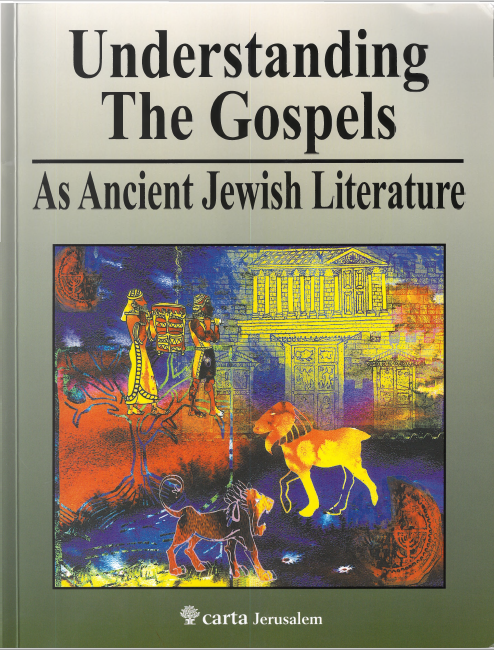For readers on the lookout for a gift for a friend or for themselves . . . .
I was attracted by the title. Understanding the Gospels as Ancient Jewish Literature. The author is Jeffrey P. Garcia, who is introduced on the cover thus:
Jeffrey P. Garcia is Assistant Professor in Bible at Nyack College, New York City. His expertise is in Second Temple Judaism and the New Testament. His research interests include examining the Gospels and Acts as sources of ancient Jewish thought and practice, and the manner in which they preserve the traditions of the Sages and the Rabbis. He is co-editor (with R. Steven Notley) of The Gospels in First-Century Judaea (Brill, 2016) and has contributed to the Biblical Archaeology Review, Lexham Bible Dictionary (Lexham Press, 2016), and The Routledge Encyclopedia of Ancient Mediterranean Religions (Routledge, 2015).
What I was expecting was a detailed scholarly argument that went some way to addressing the alternative or at least modifying view that the gospels are in part indebted to Hellenism, or Greco-Roman literature. Not so, but something quite different.
Garcia, Jeffrey P. 2018. Understanding the Gospels as Ancient Jewish Literature. Jerusalem: Hendrickson
The book makes for an excellent gift for anyone who is a seriously interested beginner to the field. And the focus is entirely on the Jewish heritage in the gospels. It is only 40 pages but the pages are large and the print is small. Or maybe it appears small because there is so much on such large pages — yet one of the main attractions of the book is its abundant and colourful illustrations, photgraphic, diagrammatic, and maps. If it were a hard cover it could be said to be an excellent coffee table volume.
Yet, the Gospels, as we have them—despite the accretion of traditions (Roman, etc.) that come from early Christianity (2nd-3rd cent. AD) and the Evangelists’ own particular styles — remain, at their core, Jewish texts. They are part of the corpora known as Greco-Roman Jewish literature and are not some radical offshoot. While it must not be ignored that some parts of the Gospels have been influenced by early Christianity’s changing, although not yet separate relationship with the rest of Judaism, understanding how they function as sources of ancient Judaism is attainable. Therefore, the purpose of this work is not to recover the Jewish background of the Gospels, but to shed light on how they function as a source of ancient Jewish practice and culture and how that can help us to clarify some of the teachings attributed to Jesus by the Evangelists. (p. 5)
On the first page of the introduction there are photographs of Albert Schweitzer, Joseph Klausner, David Flusser and Schalom Ben Chorin, but unfortunately no discussion of their respective contributions. Apart from Flusser their names appear elsewhere only in the bibliography. There are handy marginal boxes serving as a ready reference glossary for key terms like Second Temple Judaism, Tannaitic Literature, Amoraic Midrashim, Mishnah, Apocrypha, Pseudepigrapha, and so forth. These and other marginal photographs make the book one to be consulted casually as an attractive reference.
The chapters discuss the various Jewish literatures within the gospel world (Second Temple writings, rabbinic literature), the geography of the stories covered by the gospels, Jewish life as evidenced in the gospels (home-life, clothing, religious groups, synagogues, women, the temple, and so forth), Jewish styles of teaching, political and ethical life, and finally “the gospels as the first literary witness to Jewish practice” such as naming on the eighth day, ritual fringes, sabbath synagoge attendance, and more. The text appears to be sound (as one would expect from Jeffrey P. Garcia) and caution comes through where scholars are less than certain about specific customs and events. If my eyes were younger they would certainly be able to handle the very information-crowded pages more easily.
I requested my copy with the offer to review it here, as I am doing now, and will follow up with a few of the lavishly illustrated pages. Continue reading “Understanding the Gospels as Ancient Jewish Literature”

